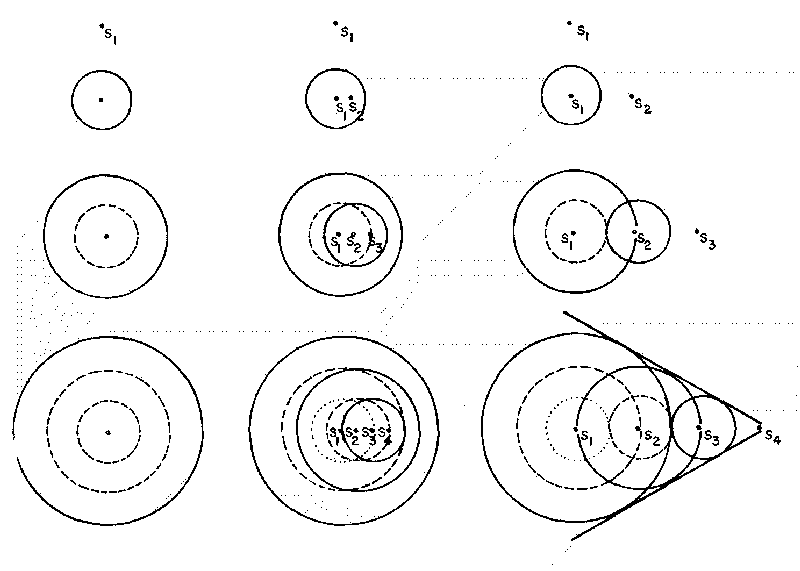Sonic Boom arises because a supersonic airplane moves
faster than the pressure disturbances, or sound waves,
it propagates. A stationary source (left) emits
spherical sound waves that move outward like concentric
ripples. If the source moves less that the speed of
sound (middle), waves emitted at successive
positions are crowded in the direction of movement. They
overtake the moving source and "warn" the air of its
approach. But disturbances from the earlier emissions
of a supersonic source (right) cannot overtake
the source, which arrives without warning and creates a
shock wave. The spheres become tangent to the sides of
the shock wave cone.
|

